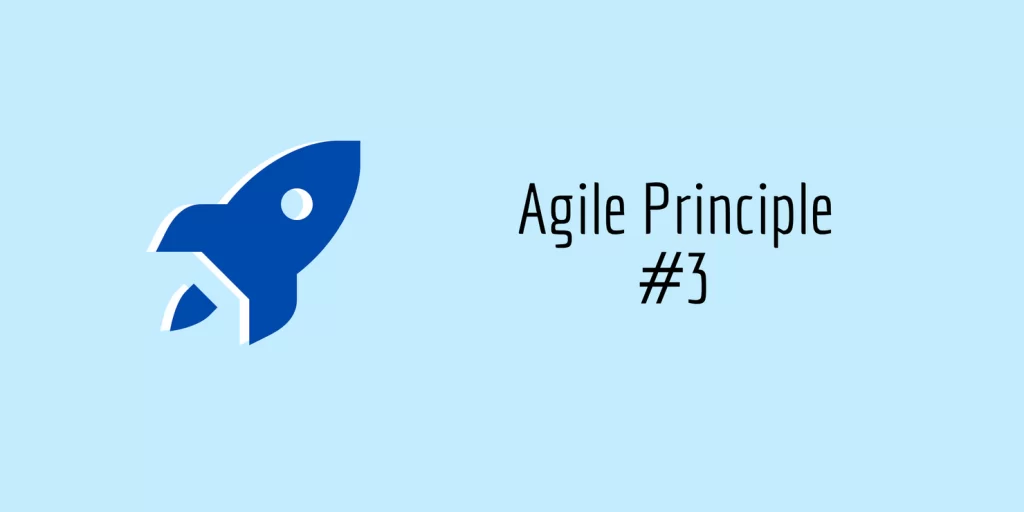
With agile being so popular you most certainly heard this idea a little bit everywhere, the “fail fast, fail often” approach. I’d say forget about fail fast and consider something else instead.
While fail fast is a great approach and got popularized by the Lean Startup approach, the reality is that the early adopters, those who have an open and curious mind and a great appetite for risk are not like the laggards, which are most big, hierarchical, and incumbent companies of today.
If you just arrive in your company defending this “fail fast” philosophy you’d get funny stares from many people. Nobody likes to fail.
Yet, some level of failing is always to be expected as perfection does not exist. But this language might imply you are always failing. And fast.
In this blog post I invite you to consider two things:
- That there is nothing about failing in fail fast.
- How to reframe this approach to be able to use it no matter the context of your organization.
Ready to forget about fail fast, fail forward and those synonyms?
“Success consists of going from failure to failure without loss of enthusiasm”
— Winston Churchill
It’s not about failing It’s about learning fast
Consider that it has nothing to do with failure, but with learning. So, you want to learn fast.
And that’s the origin of this fail-fast approach. It is in fact nothing but the good old iterative process at play. Small, iterative, incremental for any solution you implement Not guns-a-blazing 2-year long project.
Since most ideas, from theories to invention, need to be proven or disproved, materializing them in some way is necessary to see what has been a valid assumption or something you should change. If the idea is too big, you don’t want to learn too late.
You want to learn fast enough that something doesn’t work, doesn’t sell, doesn’t please, etc. and by successive approximation you get closer and closer to what does work, does sell, does please. Or even be as bold as save the money and stop investing on an idea that totally bombed! That is: before you sank months and millions on it!
For that, the implication is learning.
It’s about how do you even format questions, backlog items, name projects and initiatives, so that learning is at the forefront.
What I like about this approach is that people procrastinate less and get a bias toward action.
Example: what will prove to you and your team that a sprint of 2 weeks is optimal for you and your type of work? How will you know which CI/CD tooling is complete enough for your needs?
Test it yourself: is there something on your current process you’d wish were different? What low-cost experiment can you try before you make a full commitment? What is it that you need to learn that will help you make this a permanent positive change for your process, or give you confidence to abandon as an idea for now?
It’s not about permission to fail, It’s permission to succeed
And you can extract learning from failure just as well as you can from success.
You can repeat good practices from other places that might apply in your context, if the parameters match. I love reading biographies of highly successful people and study their habits, their thinking and even how they turned the ship around difficult situations.
So, trying is getting faster to success alright.
But you don’t have to just put into practice the first idea you just had. You can select a couple of examples on how you could presumably move forward successfully. Don’t be random at your experiments. Be intentional.
As you want to learn, you wouldn’t want to impose too many constraints, though. But you also can and should eliminate low-grade attempts. “Fail-fast” is very accepting of some research before you try. So long as the research is about using the experience of others to answer questions that help you learn.
What I like about this approach is that people get more mindful on how to invest their time.
Example: before you start using Jira as your backlog tool, look into what other successful teams are doing of have attempted. You can consider your company, but also look at Google or Booking.com. Why would you not? Why would you ignore such indisputably successful examples, even if your company might be just starting? Remember it’s about learning fast. No need to make certain mistakes yourself.
Another example is to simply look into what went really, really well in your latest release or iteration. What should you be doing more of? Is pairing so good that you now do it beyond the software development? Is that full team meeting you do on a whiteboard before you start to work on a user story proving to be a fantastic way to get the job done fast and with quality? Keep doing and double down on success!
Test it yourself: right now, what would you change in your process or even in your personal life that you can take inspiration from successful people that have gone before you? And just like in the example above, pick a couple of highly phenomenal people. Read from their biographies or from their own memoirs. Anything there you’d like to try?
It’s not about failing, It’s all about results
Consider that it’s about results and everything else is MEANING. And meaning is subjective.
Failure in the eyes of some look like a normal day to other more resilient people.
In the end you try things to obtain results. You assess those results and consider if they are satisfactory enough, then you make a decision. The decision can be about continuing, about pivoting, or about stopping something. They are all options.
Help people get better at not assigning meaning. Or at least not so fast. Nobody is failing or the opposite. Everybody is getting results. Some might be getting results that are positively proportional to their efforts. Other might be getting mediocre results. The key point is always to ask Why and keep investigating. Or ask How different results could be obtained; come up with new assumptions.
The thing I really like about this perspective is that people get less frustrated and more curious.
Example: If you look at someone who made 2 thousand dollars in revenue in a month you might think that’s not much compared to your standards. If that person made less than a thousand last month that’s over a 100% improvement. Absolute versus percentages and ratios are very informative.
In some cases, absolutes is all you get: you have a budget of 100 thousand dollars, so you may decide to invest up to 10 thousand dollars before you commit to continuing on an investment. That absolute number is your threshold.
You can choose how you look at results.
Test it yourself: how has your product, your process or your team evolved over time? Pick a metric and look at it overtime. Observe the general trend. Are there spikes? Outliers? What do those numbers and shape tell you? Can you notice something like this: “we are not bad at delivering on time. In fact, we seem to deliver on target whenever we don’t have to touch module ABC. We could look into this module closer and understand what makes it so hard to evolve”.
Strategies to forget about fail fast wording
I suggest some strategies to help your people and yourself to be more adept of faster learning, or good old iterative approach. As you read, you could pick one and try it. that’s very on theme!
And bonus point if you combine them!
1 – Change language
Nobody likes to fail, no matter how much you try and normalize failure.
Instead, think differently.
Use some of the nomenclature I sprinkled in this blog post: getting results. Getting faster to success. Learning faster. Call things “experiments” so that you are clear the result can be anything.
If you are not convinced, think of this:
- If you’ve never done something before, you can’t be worse than you already are. So every result is a success. Or at least absence of failure.
- you don’t consider your toddlers falls as their “failure to walk”. You say they are learning to walk or something like that.
Why think any different every time you attempt something new?
2 – Define landing zones
The human brain craves certainties, even if all we can give it is a range.
So, use it to your advantage!
Gradient and scales from the worst to the best work wonders. Be very creative. Have the whole team join in to dream big and to draw a terrible nightmare scenario.
That gives people true appreciation of the possibilities. It usually exposes how the bad things are usually not that bad, and if they are, nobody goes in uninformed.
Pick a tolerance level in your scale or range and constantly assess your results. If they are dipping below your acceptable bad case scenario you can make a timely decision.
3 – Define sandboxes
This one seems similar to the one above, except that it’s not about a range, but about all the parameters you can give yourself, or a person, or a team, to operate in full freedom and creativity.
How much money can we spend? How much time can we take? Who can we involve?
Really imagine is your sandbox. What are the boundaries you cannot cross?
So long as you keep respecting those parameters all results are acceptable for your experiment. Nothing is lost and both learning, and success are happening.
4 – Define horizons
Success can have different timelines for different projects and different people.
What can be done now? Next? In a more distant future?
What must really be accomplished right now, and therefore we have a much lower tolerance for discrepant results? That might inform a different approach to a technical solution than if it was to be done by next year.
For how long can we afford to continue to learn without major success? (Remember that absence of success does not signify failure).
Don’t limit your room to growth
There is no growth outside of comfort. There is definitely a choice to be made when you consider your product or your whole company in this subject of fail fast.
When understood, it is a powerful tool that you can use to innovate to the limit of your tolerance for risk.
You do this in your daily life:
If you want your kid to safely learn how to ride their bike you make sure they can play outside major roads.
Well, then consider that you can create safety inside your workplace instead of constraining creativity and learning.
I never forgot this example of Booking.com on how well defined and transparent parameters allow anyone in the company to test an idea and make a decision. Including stuff that goes to production.
But then again, I was also part of great creative companies like Hybris where ideas that have merit deserve to be tested (at least before 2013). There was belief in the individual and collective responsibility that no one would intentionally harm the company and that any issue would immediately addressed when identified.
These approaches have been used by the most innovative companies. So, you know it’s possible.
I really do hope this post gives you clarity and lightness so that you can forget about fail fast.
There can never be failure when you move forward, when it eliminate scenarios that you now know you should not pursue. There can never be failure when you learn.
How can you be meta here and apply the learnings from these success stories?



